
SUBSCRIBE TO OUR NEWSLETTER
Subscribe to our newsletter to stay informed about articles, events, and updates from Wellness Impact.

Subscribe to our newsletter to stay informed about articles, events, and updates from Wellness Impact.
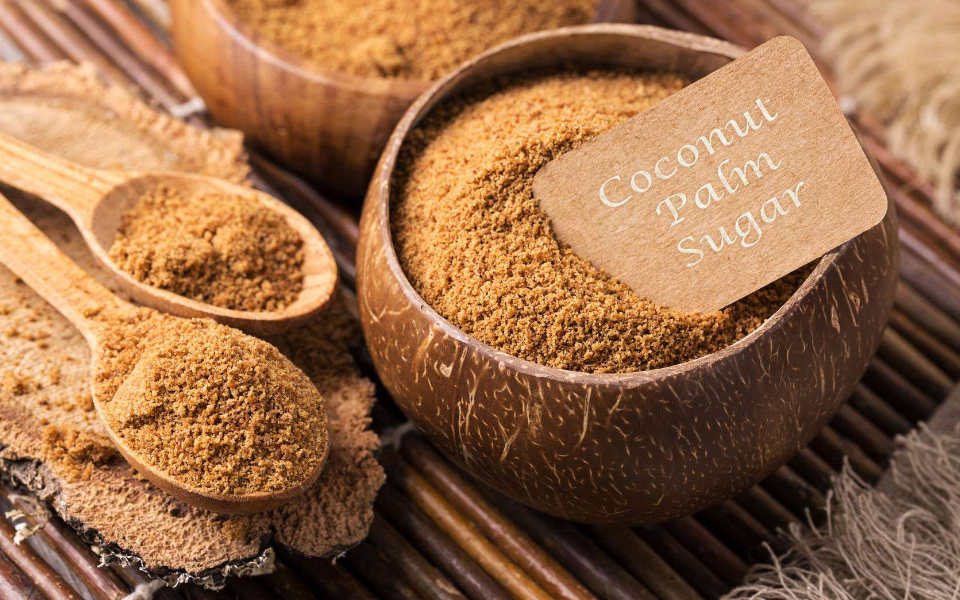
The demand for coconut sugar has soared in recent years as more and more people are opting for healthy sugar substitutes. Despite its recent rise in popularity, within health and fitness circles, it may not be the healthy alternative to sugar that we thought it was.
As we unpack the facts on coconut sugar. We’ll go through:
So let’s get started!

Coconut sugar has been used in the East for centuries but it’s a fairly recent addition to the growing list of rebranded ingredients popping up all the time, in health food stores and online. It’s an ongoing trend in the health food industry to find plants and other healthy “superfoods”, that come from foreign locations (outside the West), and sing their praises and tout their benefits.
These ancient fruits, grains, and vegetables get given good press. Those of us who are always eager to find better, healthier alternatives jump on the bandwagon, often content to pay more than what it’s worth. Coconut sugar is one of these controversial products.
We automatically assume that because coconut sugar is natural, organic, and unrefined it is a healthy sugar substitute. And in many ways, it is. But the real reason coconut sugar was introduced to the West was that it was a cheaper more natural substitute for synthetic sweeteners. Somewhere along the line, someone saw the opportunity to market it as a healthy alternative to sugar and it became available on shelves at 3 to 4 times the price of regular sugar.
It’s the job of health food advocates and marketeers to keep our customers informed. And sometimes we get disappointed when we discover overpriced “must-have” health products don’t always live up to the hype. Let’s see if this is the case with this delicious, caramel-flavoured, natural sweetener.
Coconut sugar, or palm sugar, is no stranger to millions of kitchens across Asia, where it’s a familiar addition to cooking, and gets used all the time. This versatile sugar has been a staple in most Indian pantries for centuries.
In fact, coconut sugar, also called coconut blossom sugar, is only one of many types of palm sugars frequently used in preparing daily Asian meals, beverages, desserts, and sweets. They come from different types of palm trees but all get harvested and processed in the same way and have very similar nutritional values and tastes.
At present, the major coconut producing countries, and therefore the major coconut sugar-producing countries, are Indonesia, Philippines, Sri Lanka, Thailand, and India.
Coconut sugar is the sap obtained from a part of the coconut palm (Cocos nucifera). The sap is then turned into a syrup and crystallized. Coconut sugar is a type of sugar. And just like table sugar, it contains sucrose, fructose, and glucose. It may not have the same percentages as that of sugar but it still acts like sugar. Because it is sugar. The main difference is that it contains inulin, a type of fiber. And it is for this reason that it may take longer to digest, thus lowering the GI (glycemic index).
Before coconuts form on palm trees the tree develops its buds. The buds will open into flowers that become coconuts. The sap from the coconut palm has to be harvested before the buds open. Harvesting time is crucial and too early or too late will affect the amount of sap that gets collected.
Cuts are made just below the unopened buds (the spadix) and bamboo containers are attached to the trunk so that the sap can drip out. A 6mm long cut is made and the sap is “tapped”. The inflorescence (unopened flower stem) must be bent downwards a week before tapping takes place. This will allow more sap to flow after the insertion is made. Fermentation of the sap begins quite quickly.
Studies found that sucrose levels drop in sap that is not treated with preservatives. This will affect the GI and the volatile compounds of the batch, as well as the actual sucrose/fructose/glucose content. So the sap needs to be cooked within 5 hours after tapping to prevent fermentation. And adding a natural preservative to the collection vessel slows the fermentation down.
Organic farms will use mangosteen or jackfruit bark powder to slow the fermentation process. But other farms that don’t need organic certification may use synthetic preservatives like sodium metabisulphite and limestone.
Adding these preservatives will result in a higher sucrose content.
Yield: One tree can produce between 1-3 litres of sap per day, depending on the type of palm, the health of the soil it’s planted in, the region it grows in, and the weather. Once a coconut tree has been “tapped” it can produce sap for up to 20 years!
According to the Food and Nutrition Research Institute in Trinidad this is what can be harvested from 2 hectares of land that has 300 hybrid coconut palm varieties growing on it: From 2 hectares, 205 gallons of syrup/honey can be collected or 3.5 metric tonnes of coconut sugar
Once the sap is collected, it is heated to evaporate the moisture. Sometimes sap is turned into syrup. The coconut sap, and syrup, contains a slightly different nutrient profile to the sugar. The most significant difference is the inulin level. Coconut sugar has far more inulin than the syrup, and obviously far less moisture. Coconut sugar will have a longer shelf life than the sap because it contains less moisture.
The heating process is continued until the moisture has evaporated. During cooking the froth that collects on the surface must be scooped off. This ensures that the colour is consistent and no dark residues can form. When the sap has turned to syrup it is removed from the pugon (wok) and placed in food-grade stainless steel containers. It is cooked further and must bestirred continuously to avoid granulation before time.
Once it is removed from heat it is stirred until granulation occurs. It is pressed often to dissolve lumps. Granules are then sieved for consistency. It is then spread out on stainless steel trays and allowed to dry for a further hour.
It is then weighed and packaged.
One difference between brown sugar and coconut sugar is that coconut sugar has a “fluffier” appearance, is much softer, and smells and tastes a bit like caramel.
Brown sugar, on the other hand, gets processed and then molasses is added to give it colour. But the hue of coconut sugar is natural.
Coconut sugar is unique in that it has nutrients like potassium, chloride, nitrogen, phosphorous, calcium, magnesium, zinc, and iron. It apparently contains 400 times more potassium than regular sugar (this doesn’t surprise us, considering table sugar contains literally no nutrients). It also contains fibre and non-nutrients, like antioxidants in the form of anthocyanidins and other flavonoids. The fibre found in coconut sugar is called inulin. It also has a lower GI (glycemic index) than normal sugar. These phytochemicals are present in unrefined coconut sugar as well as in coconut sap, or syrup.
According to Coconut Republic, coconut sap (before it turns to sugar) contains the following:
In addition, it is also
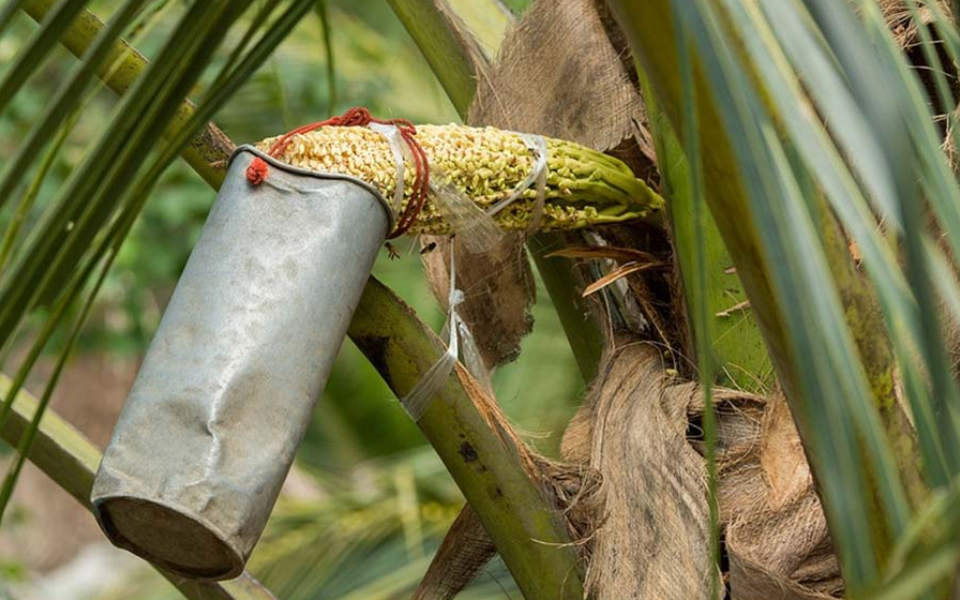
Coconut sap is nutritionally far superior to both coconut sugar and coconut syrup. Unlike sap collected from trees like maple, coconut sap is already quite sweet tasting. It has a neutral pH and is described as oyster white in colour. Sap is used to make coconut amino acids, toddy (a freshly fermented drink), and coconut vinegar.
Perhaps one of the reasons coconut sugar has been marketed as so nutritious is due to the high nutritional value of the sap. The sap is loaded with electrolytes (as is the sugar).
Potassium, sodium, and chloride are macronutrients. They are also electrolytes. Electrolytes are minerals that, once dissolved into the bloodstream, carry an electrical charge. The function is to maintain homeostasis in the blood (pH) and water (avoid water retention), as well as nerve and muscle function.
Glyconutrients are the essential building blocks of glycoproteins. They act as cell communicators, between cells. A lot more research needs to be done in the area of glyconutrients and their health benefits. They have been studied in other plant forms, like aloe vera and psyllium. But hardly any research is available on the 4 glyconutrients contained in coconut sap.
There are 8 essential plant monosaccharides (glyconutrients):
We do not know which of these monosaccharides, that form chains of polysaccharides, are present in coconut sugar. Or even if they still remain once the sap has been turned to syrup or sugar.
Freshly harvested coconut sap contains the following vitamins. (mg/DL)
It is also rich in the following minerals: potassium, phosphorous, nitrogen, sulphur, boron, zinc, calcium, magnesium, chlorine, manganese, copper, iron, and sodium.
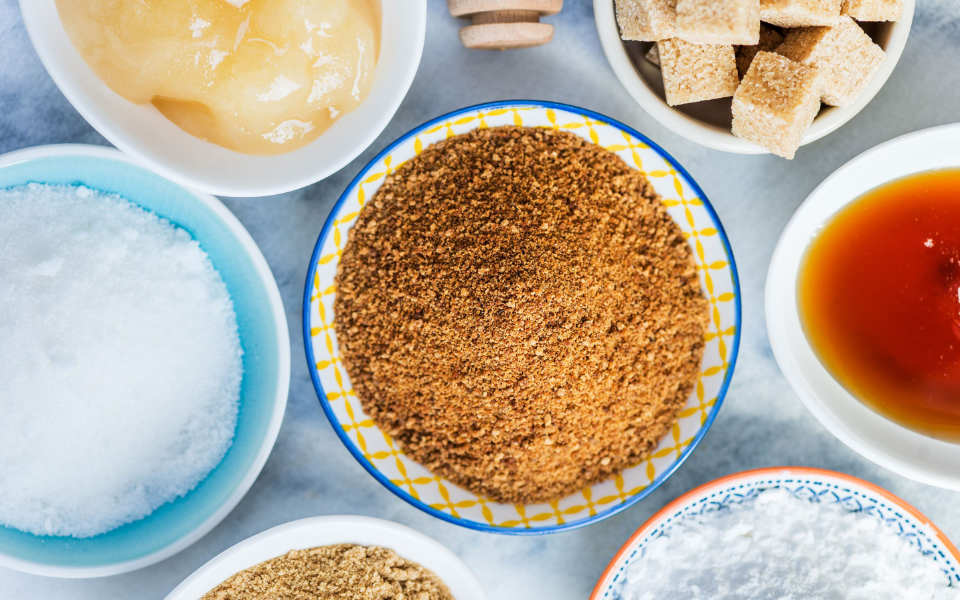
Here’s a list of the possible health benefits of replacing table sugar with coconut sugar. You will see how every benefit listed below comes with a but. The question of whether coconut sugar is healthier is not cut and dried but with some careful scrutiny we can see it is not that much healthier than table sugar.
BUT in many ways it definitely is!
No, the inulin found in coconut sugar is prebiotic BUT we need to consume 5g of inulin daily for it to be of benefit to the probiotic bacteria (Bifidobacteria) in our gut.
The recommended sugar cap per day is 5 teaspoons (25g). And even this is a bit too high. We should not exceed 8g actually. So eating 100g per day of coconut sugar to get the prebiotic benefits is ludicrous and you’ll be left with severely raised blood sugar levels!
No. As you can see, coconut sugar is very similar to table sugar, in that it contains around 4-5g of carbs per teaspoon. With a ketogenic diet the aim is to remain in ketosis in order for the diet to be effective. Consuming coconut sugar will take you out of ketosis.
On a ketogenic diet the aim is to eat 80% fats and 20% protein. Some versions, like a vegan keto diet or a ketotarian diet, opt for a ratio of 70-75% fats, 10% net carbs, and 15-20% protein. On a keto diet 20g of net carbs is all you may consume so adding any form of sugar, including coconut sugar, is a no-go.
No. Despite having a lower GI than normal sugar (35-54 vs 64), it is still a sugar and the body recognizes it as such, and responds accordingly. Consuming coconut sugar will release insulin to transport the sugar in the blood to the relevant areas in the body.
Studies show that inulin can stabilise glycemic levels, but this was proven by giving trial subjects 10g of inulin per day for 6 weeks. This equates to 200g of coconut sugar! Therefore the inulin found in coconut sugar is ineffective and unsafe for diabetic and prediabetics.
As far as our research goes, not one brand of coconut sugar is labelled raw. Certain articles claim that coconut sugar results from dehydration. If this were the case then, yes, it would be considered raw. This is false. Selling a product as “raw” is just as popular as selling it as “organic”. So if there was raw coconut sugar around the package would be labelled accordingly.
When the sap is cooked into sugar, temperatures may not reach higher than 115℃. But the temperature still has to be quite high for the moisture to be evaporated out. When dehydrating, only foods done at temperatures of 33-48℃ are considered to be raw.
The moisture content is evaporated during the heating process. And as a result of this process (and subsequent evaporation of moisture from the sap) we are left with coconut syrup. If it is heated more it eventually results in crystallisation and the sugar is pounded until it resembles the fine, golden caramel colour and soft crumble texture, we are familiar with.
Some countries practice organic coconut farming while others have a mix. But with the demand in the west for organic health products, the emphasis is on producing organic coconut sugar. The non-organic sugar is probably sold locally and to big food companies. Or if it is organic, it is not mentioned because it has been such a staple in the east for so long, and doesn’t affect the price. Also, the big companies that export coconut products go through all the steps needed to get certified. You cannot export coconut sugar unless it is certified organic. There are NGOs working with government in certain coconut producing countries to help small farmers become certified.
| Type of Sugar | Fructose/Sucrose/Glucose % | Fibre | GI (Glycemic Index) | Keto-Approved | Artificial or Natural |
| Coconut Sugar | 5g inulin in 100g | 35-54 | X | natural | |
| Honey | x | 55 | X | natural | |
| Table Sugar | 50% fructose | x | 68 | X | Natural but refined |
| Maltose | 100% glucose | x | 105 | X | natural |
| Agave Syrup | 56-90% fructose | 0.2g per 100g | 17-30 | X | natural |
| Fructose | pure | x | 19 | x | natural |
| Stevia | Steviol glycosides | x | 0 | Yes | Extracted from plant |
| Monk Fruit Sweetener | Non-nutritive | x | 0 | Yes | Extracted from fruit |
| Erythritol | Sugar alcohol | x | 1 | Yes | natural |
| Xylitol | Sugar alcohol | x | 8-13 | In small amounts | natural |
Coconut sugar is definitely healthier than white sugar but it is not a health product. It is still sugar and consuming it in excess will lead to the same problems associated with excessive sugar intake. Taking in too much sugar may lead to obesity, tooth decay, and diabetes.
But taken in moderation coconut sugar is definitely the better, healthier option.
Coconut sugar is made up of 70-80% sucrose and sucrose is half fructose. So this means around 35-40% is fructose. The difference between fructose, sucrose, and glucose is that fructose is transported to the liver whereas sucrose and glucose are not. This indicates that the fructose is stored in the liver as fat. So too much coconut sugar will result in weight gain.
On the upside, the inulin in the coconut slows down digestion and lowers the GI. And although coconut sugar is not suitable for diabetics it will not cause a sugar rush and a spike in blood glucose, like honey, agave syrup, and other natural sweeteners
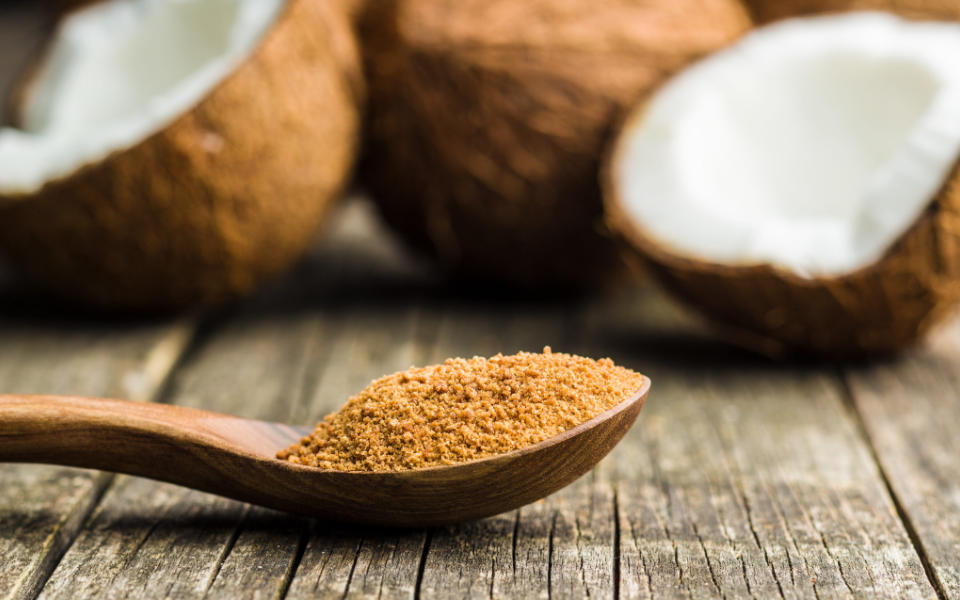
Coconut sugar is used in everyday cooking and baking. It is also used in the food industry, especially in processed foods for the Asian market. These foods include confectionery, instant noodles and sauces, soy sauce, canned goods, and many more items.
Recently there’s been an increase in the use of coconut sugar within the cosmetic industry. Whether there are actual health benefits to this remains to be seen but there are definitely positive outcomes associated with these beauty products.
And lastly, coconut sugar is used in Ayurvedic medicine. It is used as part of many holistic treatment plans to balance the doshas.
Besides the many nutrients, minerals and non-nutrients (like antioxidants) found in coconut sugar, it also contains between 12 – 70 volatile compounds. According to an article in the ASEAN Food Journal, the most abundant of these is 2-butanol and acetic acid. It also contains alpha-hydroxy acids, glycolic acid, being one.
2-Butanol is an environmentally friendly active ingredient in cosmetics. It is an extractant and is used in soaps, shaving lotions, and shampoos. It also enhances the fragrance in perfumes.
Acetic acid controls the pH of cosmetics and other personal care products.
Glycolic acid is an exfoliant. Exfoliants remove dead skin cells, regulate natural oils, buffs, polishes, and smoothes skin. It is considered rejuvenating and anti-ageing. The fact that coconut sugar contains all three of these and a whole range of other phytocompounds, with a long list of benefits, makes it an ideal addition to natural beauty products.
It is easy and cheap to make your own coconut sugar scrub, for the face, body or feet.
You will need:
Method: Mix well and transfer into a glass jar with a lid.
It’s that easy!
Tea Tree oil is ideal for foot scrubs. Add eucalyptus oil to the mix for added effect. Use lavender oil for body scrubs and lemon juice for a facial scrub. But you can also leave out the essential oil and lemon juice for the facial scrub.
This coconut sugar facial scrub will moisturize, hydrate, cleanse and tone. It is truly an all-in-one treatment at a fraction of what it costs to buy one. And it’s all natural.
Sugar for medicine? This sounds contrary to everything we have been taught. But in Ayurvedic medicine, coconut sugar plays an important role. Sweetness is one of the six tastes we need to experience to keep our doshas in balance. Each taste brings its own set of attributes.
Refined sugar is not recommended but coconut sugar, and other natural sugars, like honey, and date palm sugar, definitely have a place in Ayurveda. Sweetness contributes the following:
As a sugar, it is obvious that the use of coconut sugar in foods is to sweeten.
When sugar is used to sweeten processed and packaged foods like cereals, confectionary, baked goods (with a shelf-life), and a multitude of ready-to-eat snacks and condiments, the cheapest form of sugar is often used.
In countries like India, Indonesia, Sri Lanka, and other coconut producing countries, coconut sugar is used. If not coconut sugar, then some form of palm sugar.
In traditional Eastern and Asian cooking many condiments and curries call for coconut sugar. Indonesian dendeng is a meat dish using coconut sugar. And Indonesian sweet soya sauce, called kecap manis, is also made using coconut sugar.
When it comes to using coconut sugar domestically, the ratio is 1:1 with sucrose (table sugar). This makes it really convenient, and easy, to substitute coconut sugar for any recipe, sweet or savoury.
Baking with coconut sugar may hold a slight nutritional advantage over normal sugar in that the quantities used when baking often exceed 100g. And 100g of coconut sugar contains enough potassium (625mg) to be beneficial. Heat actually increases the absorption of potassium. This makes it look promising as a healthy alternative to sugar when baking.
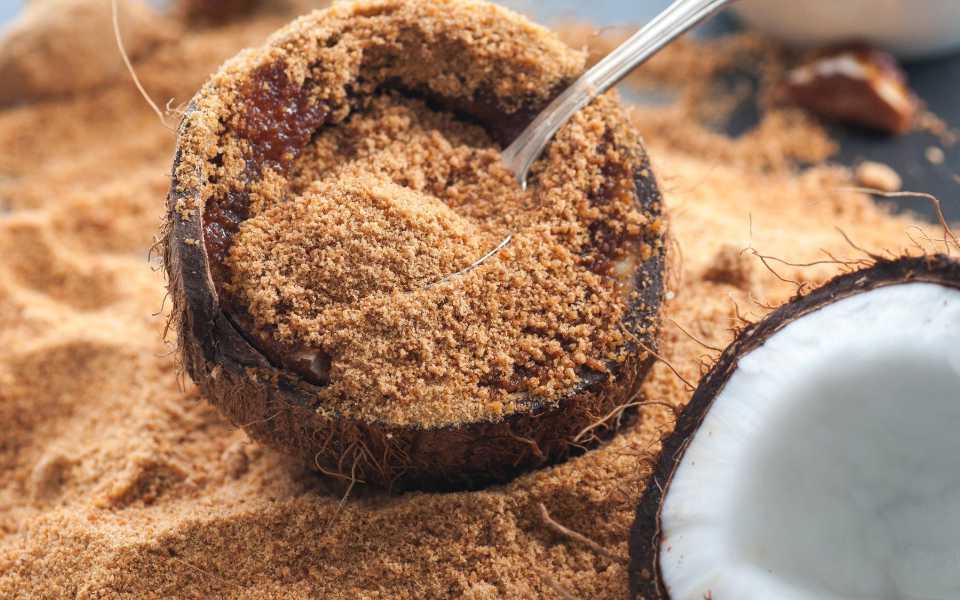
This question has two answers. Yes and no.
Confused?
In short, yes it is sustainable because organic farming is being encouraged in this sector. And coconut sugar farming is not an industrialized industry, so it caters for the small farmers who are losing out against palm oil. And no, it’s not sustainable if it is threatening the coconut farming industry. But is it?
Let’s unpack the issues surrounding the sustainability of coconut sugar.
Coconut farming (not coconut sugar farming) has always been viewed as a sustainable crop. The majority of coconut farmers are smallholders. They grow coconuts along with banana, coffee, cassava, and cocoa. This type of mixed landscape farming is good for the soil, the crops use less water, and the need for chemical fertilizers is eradicated. There is also less disease and crop damage from pests when this type of farming is employed.
The 3.5 million coconut farmers in the Philippines, and the 4 million odd farmers in Indonesia, account for 60% of the world’s coconuts, and their products. But coconut farmers in these two countries are facing dire straits. And the main threat is palm oil.
Palm oil, especially red palm oil, is not a sustainable crop. It is the reason the Orangutans are facing extinction. Once the natural supply had been decimated, palm oil farmers began to grow this crop. The Dutch contributed to this problem by bringing in palm oil, in the 70s.
Palm oil is a far more industrialized crop, it can produce oil faster and cheaper. The price of coconuts has dropped and the small farmers are being pushed out of business. They do not get the government assistance like the palm oil farmers get. Locally, people switched to palm oil for cooking. And many coconut farmers want to switch to coconut sugar farming as the price is higher than what they are getting for coconuts and their by-products. But concerns that coconut sugar farming is a threat to coconut farming are unfounded and the coconut sugar farms take only 10% of the current market.
Coconuts grown for sap cannot produce coconuts as well.
Trials were carried out. First a sap crop was harvested, followed by a coconut crop. The quality and yield of the coconuts were poor. Other trials, using dwarf hybrids (from Sri Lanka) show opposite results, so more studies need to be done.
The number of coconuts being grown is dropping as the demand for coconut sugar and palm oil threaten this sector. But this article is focused on coconut sugar so we will leave the threat of coconut farming vs coconut sugar farming for another time.
And not all is doom and gloom. SNV, a non-profit Dutch/Indonesian collaboration is making positive strides to get the small farmers growing coconut sugar. The Indonesian domestic market for coconut sugar is 600,000 metric tonnes annually.
Coconut sugar is used in products like soy sauce, processed foods, and a wide range of other food products. This is before we even get to the organic coconut sugar demand in the Western and Asian countries. Initiatives are underway to encourage smallholders to switch to coconut sugar farming. The price is better and the farmers are getting assistance, that is affordable and quite speedy, to get their crops certified for organic coconut sugar export.
In a press release from Wiredrelease, it was forecast that the CAGR (compound annual growth rate) projected between 2019 and 2024 will be 5.86%. So it is making sense for coconut farmers to switch from coconuts to coconut sugar. There is already a large market for the sap, which gets turned into vinegars, tuba (a fermented alcoholic beverage), and other products. The nutritional value of the sap is far greater than that of the sugar.
If we compare the sustainability of coconut sugar to sugar cane, it is definitely the more sustainable of the two. These are just a few facts on why coconut farming is seen as a more sustainable crop, when compared with sugar cane.
As you can see there are both positive and negative points concerning the sustainability of coconut sugar as a crop. But the pros outweigh the cons and it may be a crop that can save millions of smallholders from losing their livelihood. What this means for the greater coconut farming industry remains to be seen.
As mentioned, using coconut sugar in recipes is a straight 1:1 ratio when substituting for other sugars. But in places like India, Thailand, and Indonesia, original recipes calling for coconut sugar are the norm. Coconut sugar adds its own unique flavour profile to the finished product.
There are so many recipes with coconut sugar online but this one is a real treat. It comes from an old Indian recipe book by Jack Santa Maria, titled Indian Vegetarian Cookery. And it comes with a bit of cultural history.
Laddus are sweets made with flour, usually gram (chickpea) flour or semolina. During the festival of Ganesh Chaturthi, usually held in August or September, these sweet balls are offered to Ganesh, the deity that attracts wealth.and success.
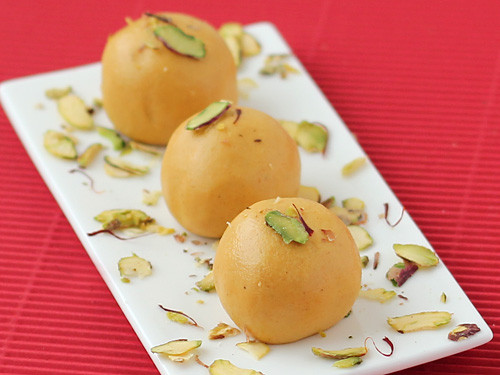
This recipe is so simple and fast. Use the “sugared” fruits for cereal toppings or serve with Greek yoghurt as a complete breakfast.
You can use stone fruits like peaches, plums, and nectarines, but you can also do this with cubed pineapples or apples.
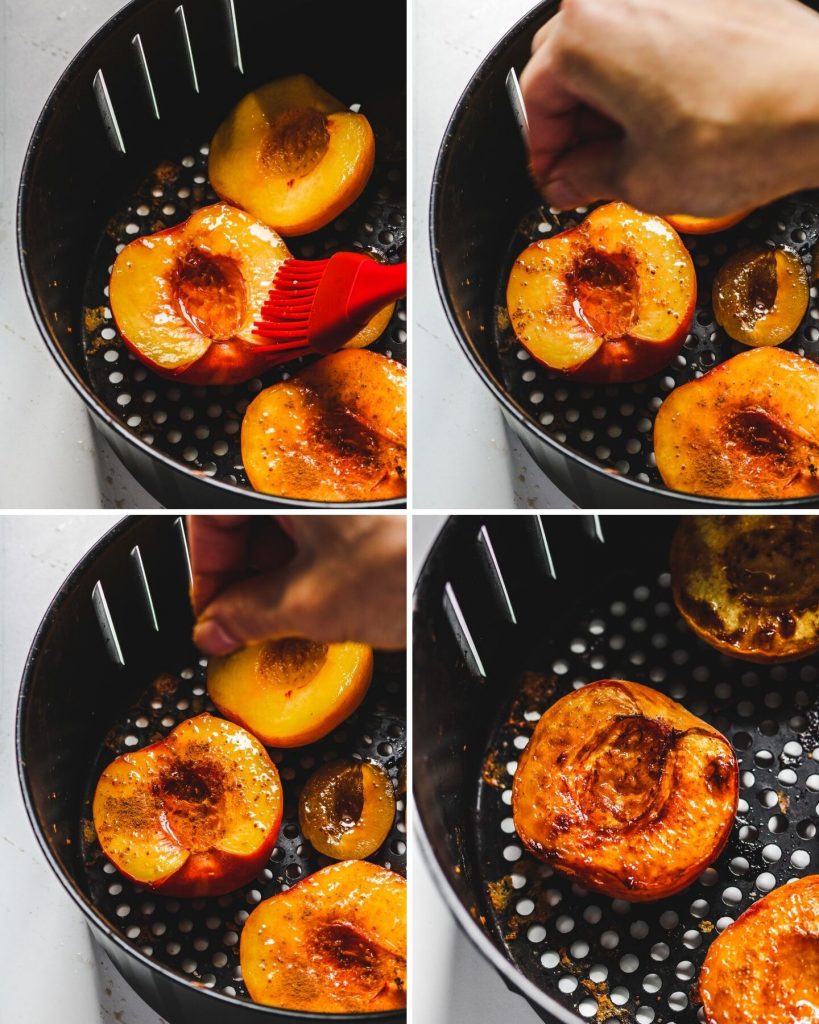
Courtesy of Okonomi Kitchen
Enjoy as a dessert or on its own.
We hope you have found this Complete Guide to Coconut Sugar informative, and entertaining. As you can see, coconut sugar has a place in the health food market because it is
And while it is still a sugar, and therefore not suitable for diabetics, it can be easily substituted for table sugar at a 1:1 ratio.
Many of the health claims made on coconut sugar are exaggerated and could be misleading. Just because it contains nutrients does not make it a healthy sugar. But it is a wonderful natural sweetener and just because it does not live up to the hype does not mean it should be discarded.
For anyone wanting to eat a healthy, balanced diet of natural and wholefoods, coconut sugar is a good choice. Use it instead of refined table sugar. But use it in moderation as it will have the same detrimental effects of sugar when taken in excess.